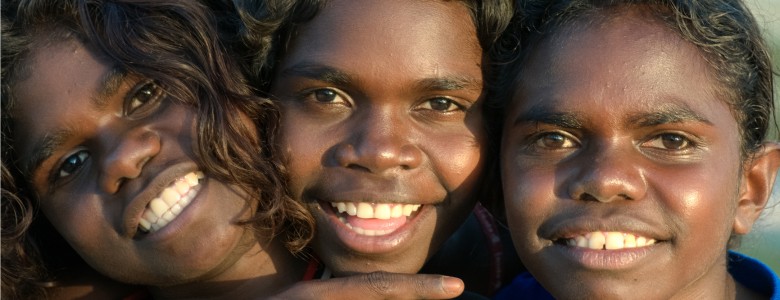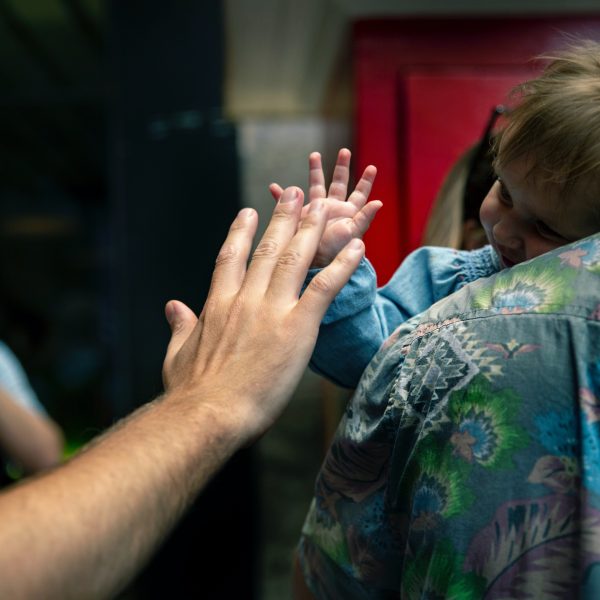Culturally adapted early childhood program for Aboriginal children shows promise

A culturally adapted early childhood program for Aboriginal children has shown promising impacts on their language, development and communication skills, according to a new study co-led by the Murdoch Children’s Research Institute (MCRI) and the Baker Heart and Diabetes Institute.
The research, which was commissioned by the Central Australian Aboriginal Congress (Congress) found children attending the centre in Alice Springs were receiving a high-quality early education and care (ECEC) service and their overall learning skills had improved.
Attending high quality early childhood settings greatly improves children’s learning, school readiness and wellbeing, particularly for those children who are experiencing disadvantage, MCRI’s Professor Sharon Goldfield said.
In 2018, only 76 per cent of Aboriginal children aged four years were enrolled in an early childhood education program, well below the Closing the Gap target of 95 per cent by 2025. Two in five Aboriginal children who started school in 2018 were also developmentally vulnerable, according to the Australian Early Development Census (AEDC).
“Globally, Indigenous children face some of the greatest barriers to positive developmental outcomes and experience greater educational, health, social, and economic disadvantage following centuries of colonisation, assimilation, discrimination and racism,” Professor Goldfeld said.
Baker Heart and Diabetes Institute and Curtin University Professor Sandra Eades said despite these barriers Aboriginal families aspired to see better educational outcomes and life opportunities for their children.
“Traditional cultural practices and a strong sense of cultural identity act as protective factors for children and families in the face of these challenges,” she said.
“But few studies have evaluated how early childhood education and care services can support Aboriginal children’s learning and development or reported on the challenges of conducting such evaluations.”
The study, published in the Early Childhood Education Journal, evaluated the Arrwekele Akaltye-Irretyeke Apmere Centre for Aboriginal children in Alice Springs, which follows a specially modified early learning curriculum incorporating Aboriginal cultural practices and language.
The Centre, the only one of its kind, supports children from the age of six months to three years from unemployed families who would not otherwise attend an early childhood program.
The centre has adopted a culturally adapted version of the ‘Abecedarian’ approach to supporting the learning and development of young children, using evidence-based teaching and learning strategies that emphasise the role of young children as active learners and encouraging educators to have frequent, intentional and playful interactions with the children.
Professor Goldfeld said despite some challenges, particularly early in its operations such as initially low attendance rates, the centre had continued to improve and was overwhelmingly valued by staff, parents/carers and community stakeholders.
“By the end of the evaluation period, more children were regularly attending the centre and receiving a high-quality service, the staff were passionate and skilled and engagement with families continued to improve,” she said.
“Parents and carers appreciated the practical support the centre provided them, such as the transport provided, the lack of fees, and the stable and culturally safe welcoming environment for their children.”
Professor Eades said for Aboriginal children it was important that these early childhood services support their cultural identity and connections, for example, through incorporating cultural content, Aboriginal languages and a focus on family engagement.
During the evaluation, the centre was rated by the Australian Children’s Education and Care Quality Authority as ‘exceeding’ the overall National Quality Standard.
While many children entered the centre with low levels of development, language and communication skills, at follow-up, the preschool language screening test (PLS-5) showed children who had more exposure to the centre tended to have higher language scores.
“Parents/carers and staff reported improvements in the children’s social skills, independence and cognitive abilities such as increased talking and showing more interest in reading, which they attributed to attendance at the centre,” Professor Goldfeld said.
Congress Chief Executive Officer Donna Ah Chee said if children had the right start to life it could change their whole life story.
“Our centre is really helping some of our most disadvantaged children get a healthy start to life so that they can go on to pre-school and school with the capacity and capabilities they need to do really well,” she said.
“Aboriginal children and families across the country should have access to evidenced-based, culturally responsive childhood development programs such as this, no matter their circumstances.”
Professor Eades said given the strong impact of the social determinants of health on long-term Aboriginal health outcomes, early childhood development programs such as these, with strong implementation research and evaluation should be a priority for governments and communities.
Researchers from the University of Melbourne and The Royal Children’s Hospital also contributed to the findings, which may be accessed here.
Popular

Quality
Practice
Provider
Research
Workforce
Honouring the quiet magic of early childhood
2025-07-11 09:15:00
by Fiona Alston

Practice
Provider
Quality
Research
Workforce
New activity booklet supports everyday conversations to keep children safe
2025-07-10 09:00:16
by Fiona Alston

Quality
Practice
Provider
Workforce
Reclaiming Joy: Why connection, curiosity and care still matter in early childhood education
2025-07-09 10:00:07
by Fiona Alston












